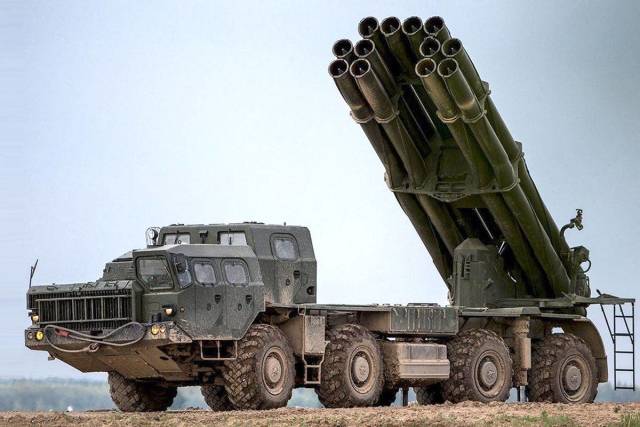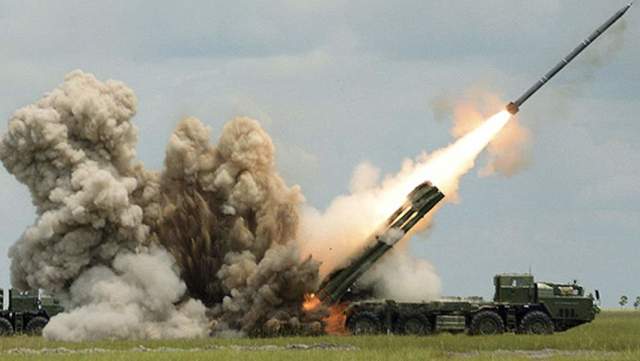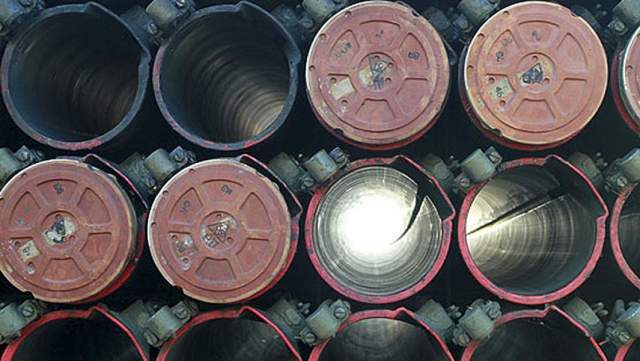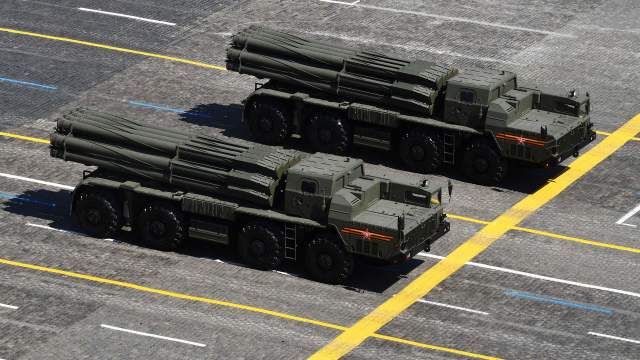A new line of ammunition has been developed for ultra-long-range Russian MLRSThe most long-range domestic multiple rocket launchers will receive new high-precision ammunition.
For Tornado-S, a line of missiles designed to destroy fortifications, equipment, infantry and enemy personnel at a distance of tens of kilometers has been developed. Experts note that according to its characteristics, the heavy Russian MLRS surpasses foreign analogues and now the priority task is to increase the volume of production of modern ammunition for it.
Reinforcement of artillery
As the military department told Izvestia, the development of a new line of ammunition for the multiple launch rocket system (MLRS) "Tornado-C" is completed — missiles are already being delivered to the troops. According to the interlocutors of the publication, their accuracy has noticeably increased and the power of combat units has increased. The updated ammunition is capable of hitting enemy equipment, fortifications and manpower at a range of tens of kilometers. However, the main tactical and technical characteristics and the principle of operation of the new missiles are not disclosed.
At the end of July 2020, the head of Rostec, Sergey Chemezov, spoke about the development of two new guided projectiles with a range of over 100 km for Tornado-S. With their help, the installation in one salvo is capable of hitting several targets at once, located many kilometers from each other. According to him, the accuracy has increased 15-20 times compared to the Smerch MLRS, which allows them to be used even against small-sized objects.
 |
| MLRS "Tornado-S". |
| Source: Ministry of Defense of the Russian Federation |
The exhibitions also demonstrated ammunition with fragmentation and cumulative fragmentation combat elements, which are suitable for hitting both personnel and heavy armored vehicles. The new Tornado-S also retain the ability to use the entire list of unguided rockets for the most common MLRS "Smerch" now.
At the board of the Ministry of Defense on December 21 of this year, the head of the military department, Sergei Shoigu, proposed to form five artillery divisions, as well as large-capacity artillery brigades, to create an artillery reserve in strategic areas. The composition of these compounds may include "Tornado-S".
According to its technical characteristics, the Tornado-C surpasses the notorious HIMARS, military expert Dmitry Boltenkov told Izvestia.
— They have a higher firing range, a more powerful warhead and more missile options, — the expert noted. — The task of Tornado is to work on the most important targets both in the tactical and operational depth of defense, at ranges that are beyond the range of barrel artillery. It is necessary to continue to saturate the troops with such systems so that even the division commander could promptly "order" a strike in the interests of his unit to the maximum depth.

MLRS "Tornado-S"
Image source: Photo: Ministry of Defense of the Russian Federation
Despite the fact that even in the basic version, Tornado-C projectiles can fly more than 100 km, the range alone is not enough today. Each rather expensive ammunition for such systems must be highly accurate in order to hit the designated target without a miss. The powerful warhead from 300 mm rockets is ideal for destroying small bridges, including pontoon bridges, hitting fortifications and strong buildings, ammunition depots and hangars in which enemy equipment is sheltered. Now the main task is to quickly establish the production of new missiles in such quantities that the front will feel their use next year, the expert noted.
 |
| MLRS "Tornado-S". |
| Source: iz.ru |
The successor of "Tornadoes"
300-mm MLRS "Tornado-S" was developed by JSC "Scientific and Production Association "Alloy" named after A.N. Ganichev" and is produced by the company "Special Design Bureau" (SKB). The decision to develop a modernized successor to the "Tornadoes" was made in the late 2000s. Their first brigade set entered the army in 2019. The following year, the complexes were publicly demonstrated for the first time at the Victory Day Parade in Moscow.
Rostec does not report on the exact number of MLRS issued, but regularly reports on the supply of new equipment to the troops. In October, the company reported an increase in production "at times". The next batch of Tornado-S was shipped from the factories on November 16 of this year. According to the general director of SKB Sergey Dyadkin, "due to the high workload of production at a number of sites, employees work in three shifts."
Externally, the new cars do not differ much from their predecessors. They use the same MAZ-543M chassis and have 12 guides, like the "Smerch". The communication equipment antennas are issued a novelty, which allow them to be combined into a single contour with other artillery equipment and receive external target designation, as well as an additional cabin for the commander of the calculation, from where he can control the guidance and firing of the system.

Photo: Ministry of Defense of the Russian Federation
Image source: iz.ru
Each high-precision ammunition "Tornado-S" can receive an individual flight task. The correction is performed using the GLONASS satellite navigation system, which significantly increases the accuracy of the impact.
One of the most important differences was the increased range — 120 km versus 70-90 km for "Tornadoes". Now it is not inferior to the Tochka-U ballistic missiles. The Russian Defense Ministry reported that "Tornado-S" are actively used during a special military operation in Ukraine. With their help, command posts, warehouses with weapons, ammunition and fuel and lubricants, communication centers, air defense equipment and other important targets located at a great distance - over 100 km are disabled and destroyed.
Among the main differences of the Tornado-S is an upgraded launcher equipped with an automated fire control system. It allows the use of both new correctable ammunition and unguided extended-range missiles. The installed equipment allows you to automatically determine the coordinates of the combat vehicle and calculate data for firing. It also performs precise guidance of launchers in the vertical and horizontal planes, which makes it possible for the calculation not to leave the cockpit to prepare for firing.
The Ministry of Defense previously reported that new equipment and automated systems allow these MLRS to exchange information automatically with a high level of protection against interception, display and store information, navigate the terrain offline using an electronic map, quickly aim at the target and leave positions in a matter of minutes to avoid retaliatory strikes.
Anton Lavrov



